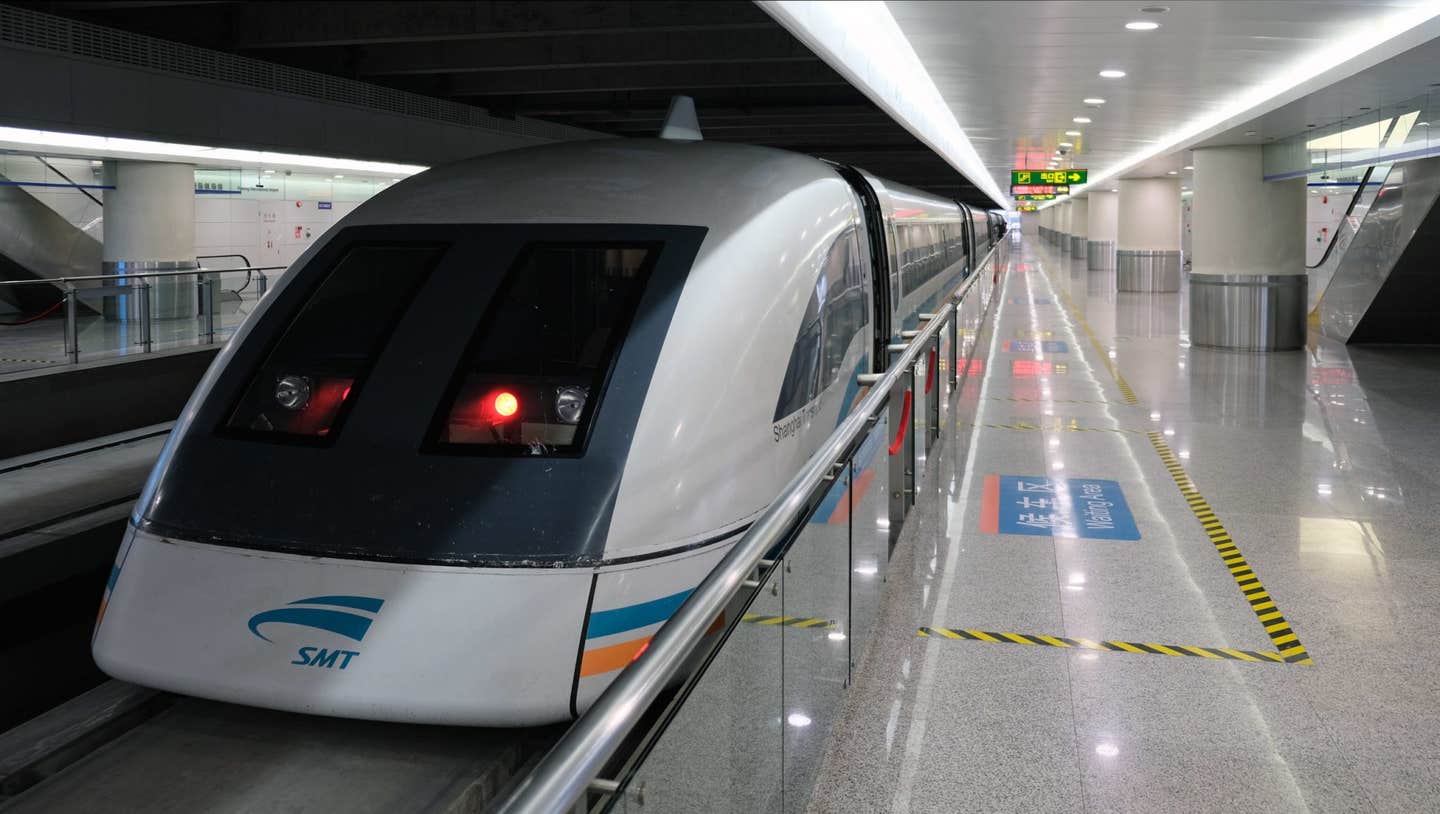Groundbreaking high-speed train just set a new record and could travel fast as an airplane
On a recent test run, China’s high-speed maglev train, a technological masterpiece, clocked an astonishing speed of 281 miles per hour.

[Sept. 5, 2023: Staff Writer, The Brighter Side of News]
On a recent test run, China’s high-speed maglev train, a technological masterpiece, clocked an astonishing speed of 281 miles per hour. (CREDIT: Creative Commons)
China, a nation long-famed for its groundbreaking technological feats, is once again in the limelight. This time, it’s not a skyscraper, a bridge, or a quantum computer, but a train. Not just any train, but the fastest train in the world.
On a recent test run, China’s high-speed maglev train, a technological masterpiece, clocked an astonishing speed of 281 miles per hour. This blistering pace not only sets the maglev as the fastest train globally, but it also begins to challenge the domain of commercial air travel.
As it stands, commercial flights maintain a cruising speed ranging between 545 mph and 574 mph. Yet, once fully developed and optimized, the engineers behind this incredible feat believe the maglev could soar to speeds of up to 621 mph.
The secret behind this prowess? A term that seems to have sprung from science fiction: "magnetic levitation" or maglev. The maglev system allows the train to almost float, as if by magic, minimizing the friction traditionally experienced with standard train tracks.
Related Stories
But this isn’t magic—it’s science. The heart of this system lies in its superconducting magnets, kept at bone-chilling temperatures to augment their magnetic strength. These magnets, stationed on the train, engage with metallic components on the walls of a specially designed low-vacuum pipeline.
The resultant interaction creates both levitation and propulsion, meaning the train rides on a cushion of air rather than traditional tracks. The outcome is not just heightened speed but also a reduction in noise pollution.
For some, this concept might sound unprecedented. However, China already flaunts a prototype in action. Shanghai's existing maglev train, bridging Pudong Airport and the Longyang Road station in the city’s core, condenses a 19-mile journey into a mere seven-minute ride.
China's new high-speed maglev train. (CREDIT: Chinese Academy of Rail Sciences)
“High-speed rail opens doors to tourism for hidden getaways in China,” reports a related video on Dailymotion, highlighting the broader social and economic implications of such innovation.
Yet, China's ambitions stretch far beyond Shanghai. Under the China Railway 450 Technology Innovation Project, part of the country’s strategic roadmap for 2021 to 2025, there's a plan to proliferate this maglev technology. The vision? Seamlessly connect urban jungles with remote, rural locales, enhancing connectivity and bridging economic disparities.
The train during its test run on Meizhou Bay cross-sea bridge. (CREDIT: Chinese Academy of Rail Sciences)
Such advancement isn’t just about speed and connectivity; there’s an environmental narrative deeply interwoven. China, despite its economic growth, grapples with the looming specter of environmental degradation. From 2005 to 2020, the number of passenger cars spiraled, jumping from 19 million to a staggering 239 million. By 2018, China shouldered the blame for 11% of the world's transport-induced air pollution emissions, second only to the United States.
Yet, there’s hope. As part of its commitment to the environment, China aims to see its carbon emissions peak by 2030, with a long-term goal of achieving carbon neutrality by 2060. Maglev trains, producing zero direct emissions, align perfectly with this green vision. They also present an ecological boon – they don’t fragment the landscape. Where highways and traditional rails pose barriers, maglev tracks are a haven, allowing wildlife to cross unharmed.
From 2005 to 2020, the number of passenger cars spiraled, jumping from 19 million to a staggering 239 million. (CREDIT: Creative Commons)
One can’t help but marvel at the potential of this technology, which, according to estimates, could be fully operational in a window of three to ten years.
The promise is tantalizing: a train ride faster than a flight, a solution to the traffic congestion and air pollution conundrum, and a green transport alternative that respects both nature and urban development. As the world watches, China once again positions itself at the frontier of technological and environmental innovation.
Note: Materials provided above by The Brighter Side of News. Content may be edited for style and length.
Like these kind of feel good stories? Get the Brighter Side of News' newsletter.
Joseph Shavit
Head Science News Writer | Communicating Innovation & Discovery
Based in Los Angeles, Joseph Shavit is an accomplished science journalist, head science news writer and co-founder at The Brighter Side of News, where he translates cutting-edge discoveries into compelling stories for a broad audience. With a strong background spanning science, business, product management, media leadership, and entrepreneurship, Joseph brings a unique perspective to science communication. His expertise allows him to uncover the intersection of technological advancements and market potential, shedding light on how groundbreaking research evolves into transformative products and industries.



